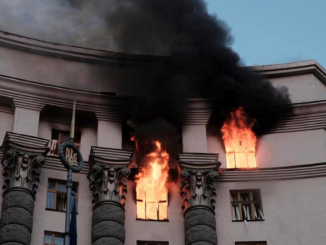
| Published June 28, 2025
In a war increasingly dominated by the hum of drones and the whine of missiles, Ukraine finds itself under relentless assault from above. Recent UN reports reveal a grim milestone—over 3,000 civilians killed or wounded by short-range drone strikes since the start of Russia’s full-scale invasion. The technology, once considered surgical and precise, has become a terrifying constant for ordinary Ukrainians, many of whom have been struck while driving, walking, or sheltering in what they believed were safe spaces. As overnight barrages continue to claim lives in cities like Odesa and Dnipro, the line between battlefield and homefront grows ever more blurred—casting a shadow not only on Ukraine’s skies, but on the future of modern warfare itself.
⚠️ UN: Over 3,000 Civilian Casualties from Short-Range Drums
A United Nations Human Rights Monitoring Mission report reveals that, between February 24, 2022 and April 30, 2025, short-range FPV drones have caused:
-
3,030 civilian casualties (395 deaths and 2,635 injuries)
-
Most strikes targeted people carrying out daily activities—walking, driving, evacuating, even in marked ambulances
-
Nearly 90% of these casualties occurred in areas controlled by Ukraine
-
The UN warned these attacks “may in some cases constitute war crimes” by violating principles of distinction and precaution
Casualties peaked in April 2025 (42 killed, 283 wounded), with events continuing through May and June—including specific incidents like the June 23 drone strike that killed a minibus driver in Donetsk
💥 Overnight Strikes: Missiles & Drones Claim Dozens of Lives
On the night of June 27–28, Russia launched a concentrated wave of approximately 23 Shahed drones, supplemented by missiles—most were intercepted, but some still struck civilians across at least six regions
-
At least 10 people were killed, and about 50 others wounded
-
The deadliest strike occurred in Dnipropetrovsk’s Dnipro/Samar area: a missile hit a residential zone, killing five and wounding ~25
-
A Russian drone struck a 21-story residential tower in Odesa, killing a married couple and injuring 14 (including 3 children); a large fire broke out across three floors
-
Additional civilian deaths occurred in Donetsk (two), Kherson (one), and likely others; multiple other regions reported injuries

🇺🇦 Ukraine’s Counter-Drones: Strikes on Russian Military Assets
In a tit-for-tat response, Ukraine deployed drones against Russian military targets:
-
In Crimea, drones hit the Kirovske air base, reportedly destroying three helicopters (Mi‑8, Mi‑26, Mi‑28) and a Pantsir‑S1 air-defense system
-
In Volgograd Oblast, Ukraine allegedly struck four Su‑34 fighter jets at the Marinovka airfield, destroying two and damaging the others
-
Russian sources claimed they intercepted and shot down more than 40 Ukrainian drones over western Russia and Crimea
 Implications
Implications
🔍 1. Rising Civilian Vulnerability
The line between combatant and civilian has become increasingly blurred. Drones, especially first-person-view (FPV) models, are being used in areas far from the front lines, often targeting civilians going about daily life. This raises serious humanitarian concerns and suggests a deliberate shift toward psychological warfare intended to wear down public morale.
⚖️ 2. Possible War Crimes
According to the UN, the use of drones against civilians who are clearly non-combatants—such as medics in ambulances, people evacuating, or those walking in public areas—may constitute war crimes, violating international humanitarian law on distinction and proportionality.
🛡 3. Evolving Nature of Modern Warfare
Drone warfare is no longer just about military efficiency—it’s cheap, precise, and increasingly difficult to defend against. The success of both Russian and Ukrainian drone campaigns shows that drones are reshaping military doctrine, making them central to both offensive and defensive strategies.
🇺🇦 4. Ukraine’s Technological Escalation
Ukraine’s retaliatory drone strikes on Russian airfields, jets, and helicopters show a strategic evolution. Not only is Ukraine adapting to the drone threat, but it is also pushing back in kind—raising the stakes and possibly inviting broader Russian retaliation.
🌍 5. Global Security & Legal Precedent
The widespread and sustained use of drones against civilian populations sets a dangerous international precedent. It could encourage other nations or non-state actors to adopt similar tactics. If not addressed through legal accountability, this may normalize drone terror as a warfare tool.
 Overall Takeaway:
Overall Takeaway:
As Ukraine reels under waves of drone and missile strikes, the global chaos is a stark reminder of what happens when American leadership is weak, distracted, or entangled in endless wars. Under President Trump, adversaries thought twice. Peace came through strength, not appeasement. He prioritized American interests, secured borders, rebuilt the military, and demanded accountability from global powers like Russia and China.
While the world watches another humanitarian tragedy unfold, it’s clear: America needs bold leadership that stops wars before they start—and puts American safety, strength, and sovereignty first.
SOURCES: ZEROHEDGE – Deadly Russian Drone Strikes Have Increased On Ukraine’s Odesa
THE KYIV INDEPENDENT – Russia’s short-range drone strikes cause over 3,000 civilian casualties in Ukraine, UN reports
ANEWZ – Russian drone strike kills 2 and injures 14 in Ukraine’s Odesa
EURONEWS – At least 10 killed in overnight missile and drone attacks across Ukraine





Be the first to comment